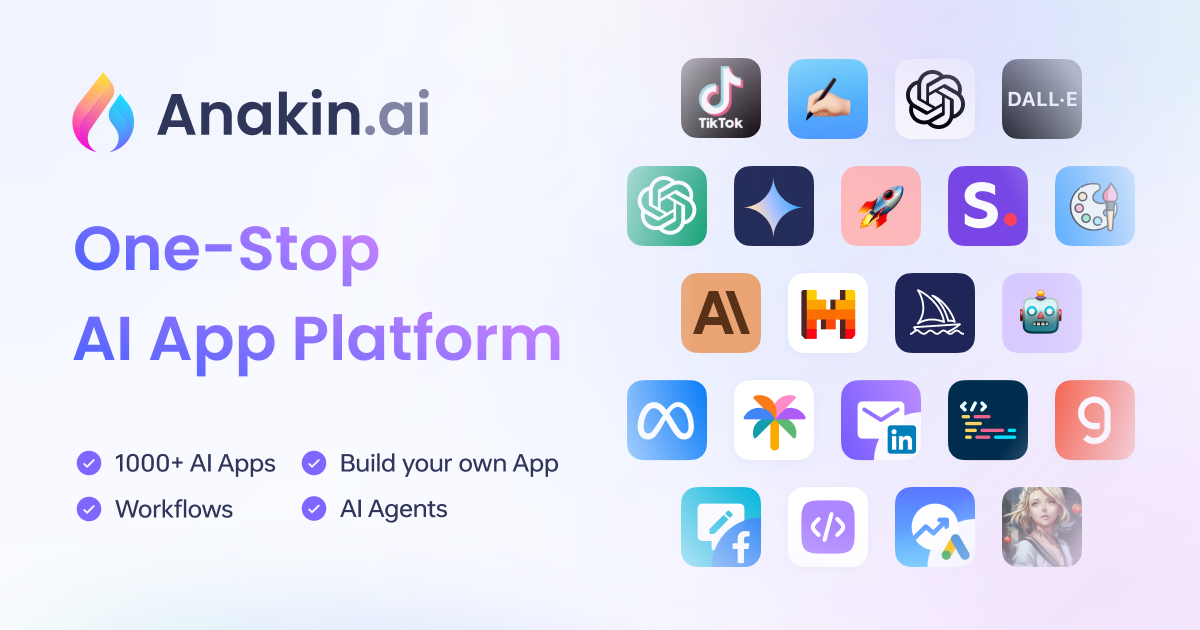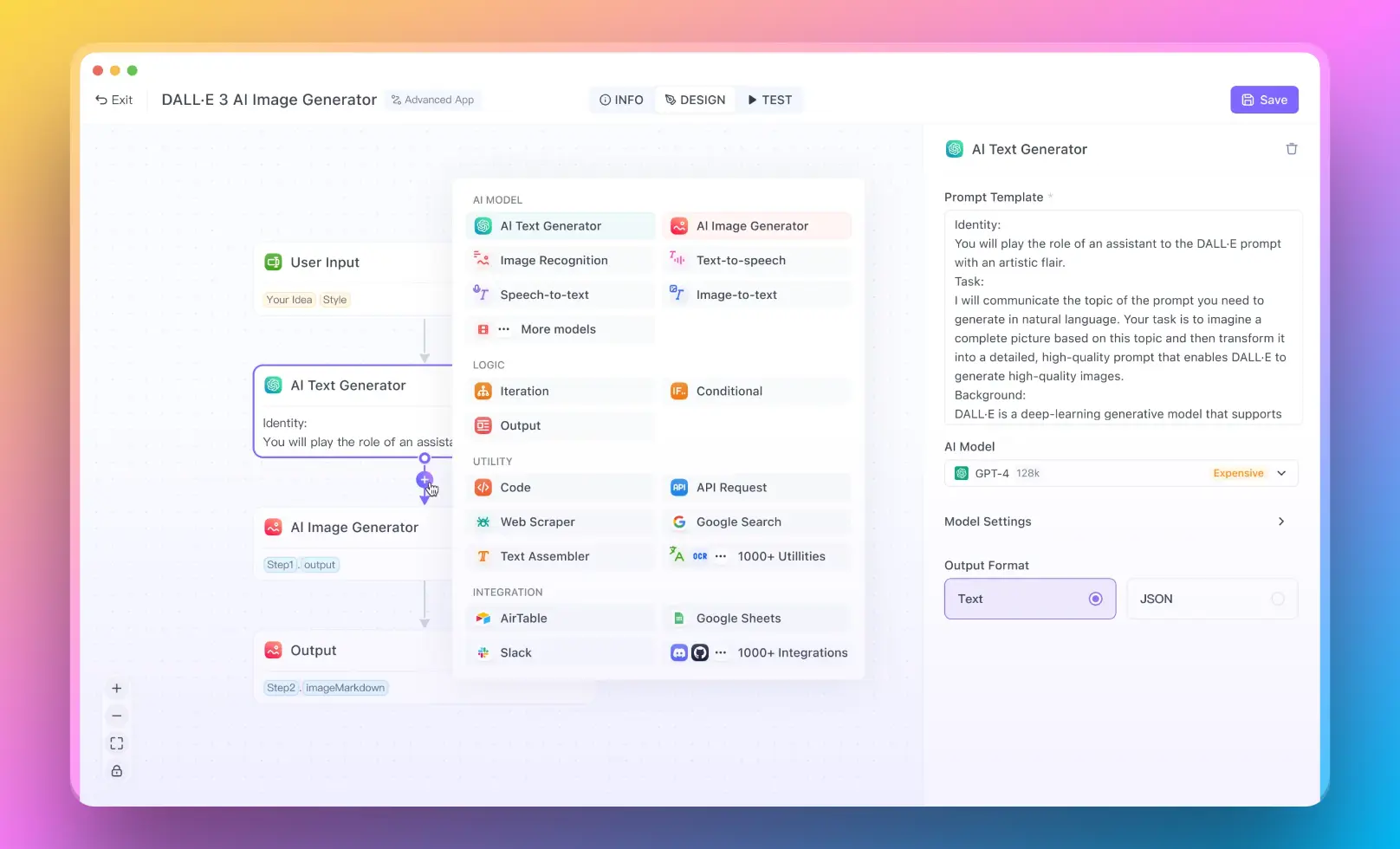Mistral AI has emerged as a significant player, offering a range of powerful language models. This article delves into a comprehensive comparison of four notable models from Mistral AI: Mistral NeMo, Mixtral 8x7B, Mistral Medium, and Mistral 7B. We'll explore their key features, performance metrics, and use cases to help you determine which model best suits your needs.
Try out Anakin AI, the All-in-One AI Platform for All AI Models!👇

Mistral NeMo 12B: the Best Alternative for 7B Models?
Mistral AI, in collaboration with NVIDIA, has recently unveiled their latest language model: Mistral NeMo. This new addition to the Mistral family represents a significant advancement in AI technology, offering a blend of power, efficiency, and versatility that sets it apart from its predecessors and competitors.

Key Features of Mistral NeMo:
Model Size and Architecture: Mistral NeMo is a 12-billion parameter model, striking a balance between the compact 7B models and the more extensive 70B+ models. This size allows for enhanced reasoning capabilities while maintaining efficiency.
Extensive Context Window: One of the most notable features is its 128,000 token context length, enabling the model to process and understand much larger amounts of text than most existing models. This expansive context window allows for more coherent and contextually relevant outputs across diverse applications.
Multilingual Proficiency: Mistral NeMo excels in multiple languages, including English, French, German, Spanish, Italian, Portuguese, Chinese, Japanese, Korean, Arabic, and Hindi. This makes it a truly global tool for various language-related tasks.
Tekken Tokenizer: The model introduces a new tokenizer called Tekken, based on Tiktoken. Trained on over 100 languages, Tekken offers significant improvements in compressing natural language text and source code, outperforming previous tokenizers in efficiency.
Quantization-Aware Training: Mistral NeMo was trained with quantization awareness, enabling FP8 inference without performance loss. This feature enhances the model's efficiency and deployment flexibility.
Open-Source Availability: Released under the Apache 2.0 license, Mistral NeMo is accessible for both researchers and enterprises, promoting widespread adoption and innovation.
Benchmarks of Mistral NeMo:

Mistral NeMo demonstrates state-of-the-art performance in its size category across various benchmarks. It excels in:
- Multi-turn conversations
- Mathematical reasoning
- Common sense reasoning
- World knowledge tasks
- Coding and programming tasks
The model's instruction-tuned variant shows particular strength in following precise instructions, handling complex reasoning tasks, and generating accurate code.
How to Deploy Mistral Nemo with NVIDIA Graphic Card
Mistral NeMo is designed for versatility in deployment:
- It can run on a single NVIDIA L40S, GeForce RTX 4090, or RTX 4500 GPU, making it accessible for various hardware configurations.
- The model is packaged as an NVIDIA NIM inference microservice, allowing for quick and easy deployment in different environments.
- Pre-trained base and instruction-tuned checkpoints are available on platforms like HuggingFace, facilitating easy integration for developers and researchers.
Mistral NeMo vs Other Mistral Models, A Comparitive Analysis
Before diving into the detailed comparison, let's briefly introduce each model:
- Mistral NeMo: A cutting-edge model with 12 billion parameters and a large context window.
- Mixtral 8x7B: A sparse mixture of experts model with impressive performance across various tasks.
- Mistral Medium: A proprietary model designed for intermediate tasks requiring moderate reasoning.
- Mistral 7B: The first dense model released by Mistral AI, known for its efficiency and versatility.
Key Metrics Comparison
Let's start by comparing some crucial metrics across these models:
| Model | Parameters | Context Window | Quality Index | Output Speed (tokens/s) | Latency (s) | Price ($/1M tokens) |
|---|---|---|---|---|---|---|
| Mistral NeMo | 12B | 128k | N/A | 74.6 | 0.35 | $0.30 |
| Mixtral 8x7B | 45B (12B active) | 33k | 61 | 88.5 | 0.33 | $0.50 |
| Mistral Medium | N/A | 33k | 70 | 36.3 | 0.63 | $4.05 |
| Mistral 7B | 7.3B | 33k | 40 | 114.1 | 0.27 | $0.18 |
All right, Let's dive in deeper into each LLM:t
Mistral NeMo
Mistral NeMo represents a significant advancement in Mistral AI's model lineup. With 12 billion parameters and an impressive 128k token context window, it offers a balance of power and efficiency.
Key Features:
- Largest context window among the compared models (128k tokens)
- Competitive output speed of 74.6 tokens per second
- Relatively low latency of 0.35 seconds
- Affordable pricing at $0.30 per 1M tokens
Use Cases:
- Long-form content generation
- Complex reasoning tasks
- Document analysis and summarization
Mistral NeMo shines in scenarios requiring extensive context understanding and generation of detailed, coherent responses. Its large context window makes it particularly suitable for tasks involving lengthy documents or conversations.
Mixtral 8x7B
Mixtral 8x7B is a sparse mixture of experts model, leveraging up to 45 billion parameters but only using about 12 billion during inference. This unique architecture allows for impressive performance across a wide range of tasks.
Key Features:
- High output speed of 88.5 tokens per second
- Low latency of 0.33 seconds
- Quality index of 61, indicating strong overall performance
- Moderate pricing at $0.50 per 1M tokens
Use Cases:
- General-purpose AI applications
- Tasks requiring a balance of speed and quality
- Multilingual capabilities (English, French, German, Spanish, Italian)
Mixtral 8x7B offers a great balance between performance and cost, making it suitable for a wide range of applications. Its multilingual capabilities and strong performance across various benchmarks make it a versatile choice for many users.
Mistral Medium
Mistral Medium is a proprietary model designed for intermediate tasks that require moderate reasoning capabilities. While some of its specifications are not publicly disclosed, it offers a unique position in the Mistral AI lineup.
Key Features:
- Highest quality index among the compared models (70)
- Moderate output speed of 36.3 tokens per second
- Higher latency of 0.63 seconds
- Premium pricing at $4.05 per 1M tokens
Use Cases:
- Data extraction and analysis
- Document summarization
- Writing emails and job descriptions
- Generating product descriptions
Mistral Medium excels in tasks that require a balance between reasoning capabilities and language transformation. Its higher quality index suggests it may produce more refined and accurate outputs, albeit at a higher cost and with slightly lower speed compared to other models in the lineup.
Mistral 7B
Mistral 7B was the first dense model released by Mistral AI and remains a popular choice for its efficiency and versatility. Despite having the fewest parameters among the compared models, it offers impressive performance.
Key Features:
- Highest output speed at 114.1 tokens per second
- Lowest latency of 0.27 seconds
- Most affordable pricing at $0.18 per 1M tokens
- Compact size with 7.3 billion parameters
Use Cases:
- Rapid prototyping and experimentation
- Tasks requiring quick responses
- Resource-constrained environments
- Fine-tuning for specific applications
Mistral 7B stands out for its speed and cost-effectiveness. It's an excellent choice for applications where rapid response times are crucial or when working with limited computational resources. Its open-source nature (Apache 2.0 license) also makes it ideal for customization and experimentation.
Choosing the Right Model for Your Needs
Selecting the most appropriate Mistral AI model depends on your specific requirements. Here are some guidelines to help you make an informed decision:
For long-form content and complex reasoning:
Consider Mistral NeMo for its large context window and balanced performance.
For versatile, multilingual applications:
Mixtral 8x7B offers a great balance of features and performance across various tasks and languages.
For high-quality outputs in specific domains:
Mistral Medium, despite its higher cost, may be the best choice for tasks requiring refined outputs and moderate reasoning.
For speed and cost-effectiveness:
Mistral 7B excels in scenarios where rapid response times and lower costs are prioritized.
For customization and experimentation:
Both Mistral 7B and Mixtral 8x7B are available with open-weight licenses, making them ideal for fine-tuning and adaptation.
Cost of Mistral Models: Compared
The pricing of these models varies significantly:
- Mistral 7B is the most cost-effective at $0.18 per 1M tokens.
- Mistral NeMo and Mixtral 8x7B offer moderate pricing at $0.30 and $0.50 per 1M tokens, respectively.
- Mistral Medium comes at a premium price of $4.05 per 1M tokens.
When choosing a model, consider the trade-off between cost and performance. For high-volume applications, the cost difference can be substantial, making Mistral 7B or Mistral NeMo more attractive options. However, for tasks requiring higher quality outputs or specific capabilities, the additional cost of Mixtral 8x7B or Mistral Medium might be justified.
Deployment and Accessibility
It's worth noting that these models have different levels of accessibility:
- Mistral 7B and Mixtral 8x7B are available with open-weight licenses, allowing for local deployment and customization.
- Mistral NeMo and Mistral Medium are accessible through API endpoints, which may be more suitable for users who prefer managed solutions.
Consider your infrastructure capabilities and deployment preferences when making your choice.
You can easily create AI workflows with Anakin AI without any coding knowledge. Connect to LLM APIs such as: GPT-4, Claude 3.5 Sonnet, Uncensored Dolphin-Mixtral, Stable Diffusion, DALLE, Web Scraping.... into One Workflow!
Forget about complicated coding, automate your madane work with Anakin AI!
For a limited time, you can also use Google Gemini 1.5 and Stable Diffusion for Free!

Conclusion
Mistral AI's range of models offers something for every use case, from the speedy and cost-effective Mistral 7B to the powerful and versatile Mixtral 8x7B. Mistral NeMo pushes the boundaries with its large context window, while Mistral Medium offers high-quality outputs for specific tasks.
When choosing between these models, consider your specific requirements in terms of:
- Task complexity
- Required context length
- Output quality needs
- Speed and latency requirements
- Budget constraints
- Deployment preferences
By carefully evaluating these factors against the strengths of each model, you can select the Mistral AI solution that best fits your project's needs. Whether you're building a chatbot, analyzing documents, generating content, or developing a custom AI application, there's a Mistral model ready to power your innovation.
Remember that the field of AI is constantly evolving, and what's cutting-edge today may be surpassed tomorrow. Stay informed about the latest developments and be prepared to adapt your model choices as new options become available. With the rapid pace of advancement in AI technology, the capabilities of these models are likely to improve even further, opening up new possibilities for AI-powered applications across various domains.




